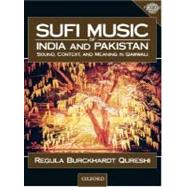
|
vii | ||||
|
viii | ||||
|
x | ||||
| The chosen repertoire | xi | ||||
| Preface to the 2005 Edition | xiii | ||||
| Preface to the 1995 Edition | xv | ||||
| Preface to the First Edition | xvii | ||||
| Terminology, transliteration and translation | xxi | ||||
| Music notation: legend | xxii | ||||
| Introduction: The Qawwali experience and ethnomusicological questions | 1 | (1) | |||
|
1 | (5) | |||
|
6 | (4) | |||
|
10 | (3) | |||
|
13 | (4) | |||
|
17 | (60) | |||
|
19 | (27) | |||
|
19 | (19) | |||
|
38 | (8) | |||
|
46 | (31) | |||
|
46 | (12) | |||
|
58 | (7) | |||
|
65 | (7) | |||
|
72 | (5) | |||
|
77 | (56) | |||
|
79 | (24) | |||
|
79 | (4) | |||
|
83 | (5) | |||
|
88 | (8) | |||
|
96 | (7) | |||
|
103 | (30) | |||
|
103 | (3) | |||
|
106 | (2) | |||
|
108 | (7) | |||
|
115 | (13) | |||
|
128 | (5) | |||
|
133 | (95) | |||
|
135 | (8) | |||
|
135 | (1) | |||
|
136 | (4) | |||
|
140 | (3) | |||
|
143 | (65) | |||
|
144 | (31) | |||
|
175 | (12) | |||
|
|||||
|
187 | (4) | |||
|
191 | (2) | |||
|
193 | (15) | |||
|
208 | (20) | |||
|
208 | (1) | |||
|
209 | (5) | |||
|
214 | (8) | |||
|
222 | (3) | |||
|
225 | (3) | |||
|
228 | (6) | |||
|
228 | (1) | |||
|
229 | (2) | |||
|
231 | (3) | |||
| Notes | 234 | (2) | |||
| Qawwali musical vocabulary | 236 | (6) | |||
| Glossary | 242 | (5) | |||
| Bibliography | 247 | (10) | |||
| Oral sources | 257 | (3) | |||
| Musical sources | 260 | (3) | |||
| Index | 263 |
The New copy of this book will include any supplemental materials advertised. Please check the title of the book to determine if it should include any access cards, study guides, lab manuals, CDs, etc.
The Used, Rental and eBook copies of this book are not guaranteed to include any supplemental materials. Typically, only the book itself is included. This is true even if the title states it includes any access cards, study guides, lab manuals, CDs, etc.